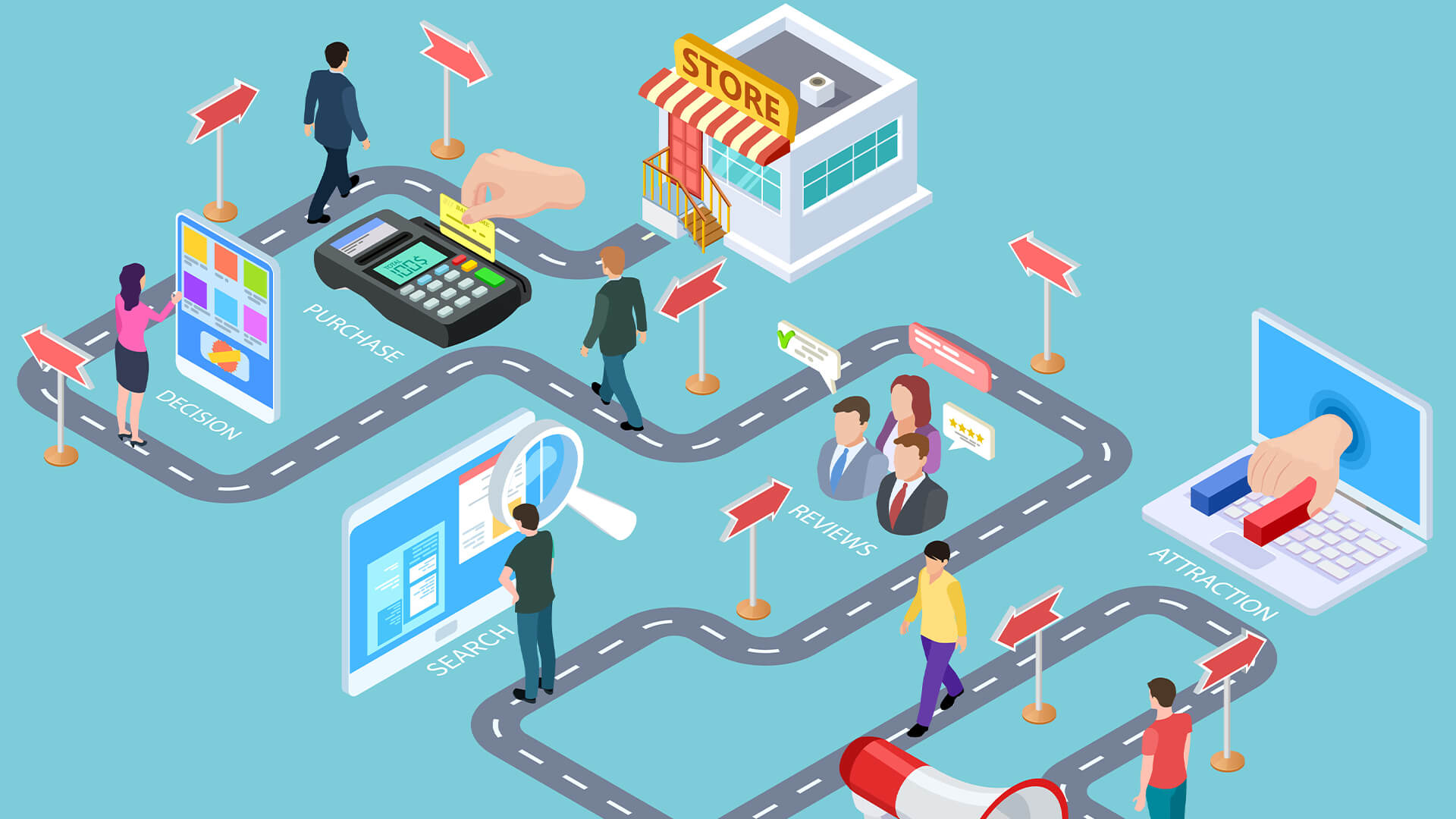Gone are the days when customers had one or two touch points with your business. Now, it really is a case of building and nurturing a relationship over time and taking your customers on a journey, hopefully, a happy journey that has benefits for you both. You also have to consider that nearly all businesses are now omnichannel, so you must consider each platform and channel a customer may interact with.
While personalisation may already lie at the center of your customer experience strategy, organisations are increasingly looking at a customer’s entire journey, and how they can guide them on that path. Just as you would with a physical journey, having a clear map can benefit immensely. In the end, you want to see better CSAT customer satisfaction scores across the board.
It’s not just about knowing how to get customers; it’s about learning to retain and keep them happy. Customer journey orchestration is something more and more businesses are including in their tactics. Just what is customer journey orchestration, however, and how do you approach doing it correctly? We look at five basic steps that can help your business help your customers.
What is customer journey orchestration?
Customer journey orchestration takes customer-centric organisations a step beyond personalisation. It’s an innovation that seeks to enhance the customer journey by improving every interaction a customer has with a business, no matter their journey stage. Orchestrating that journey more carefully, it seeks to improve the overall customer experience.
As with personalisation, this tactic revolves around careful leveraging of a customer’s data. That data comes from each and every interaction the customer has, no matter the channel or platform. The idea is that when a customer interacts with your business in any way, that current interaction is a reflection of their whole journey with you, from the moment they become aware of your brand to whatever that current interaction is.
You could describe customer journey orchestration as ‘personalisation plus’ (or as individualisation) as it seeks to give your customers an intensely personalised experience no matter the interaction. Every time you as a business interact with an individual experience, your actions should be based on the sum total of their previous experiences with you.
5 basic steps to conducting a proper customer journey orchestration
You are already likely to include a high degree of personalisation in your marketing and sales tactics, but how do you expand that personalisation to encompass every touch point of a customer’s interaction with you?
1. Audit and plan
The problem with personalisation is twofold; firstly, it’s a very linear approach that doesn’t recognise the various ways and times a customer may interact with you.
For example, your organization may use unified communications services to integrate the different communication methods that you use to interact with customers, such as video calls and instant messaging. Still, personalisation isn’t tailored to each of these communication methods.
Secondly, there was a disconnect between your marketing teams who were producing ads and posts and your customer experience teams would deal with the actual interactions customers had.
Your first step is to look at how you currently operate. This can allow you to plan how to customise your current framework and workflows to adapt to journey orchestration, even if you need to tear it all down and start from scratch. Your audit should also include looking at data on how customers interact with you now and feedback from customers that you have collected via survey forms, email questionnaires, and phone calls.
You should also look at how to bring your marketing and customer experience teams together. That could involve integrating them as a team or even forming a specialised team dealing purely with journey orchestration. Also, look at how to deal with large amounts of data. A careful audit and planning of your new tactics can provide you with a solid foundation to move forward.
2. Technology and tools
Whether you use a legacy system for your insurance company or a virtual phone system for your call centre, technology and tools play a vital role in your business. So part of your auditing and planning should focus firmly on the technology and tools you currently use, along with the ones you may need to implement to make customer journey orchestration a success. With your current model, you are likely using marketing automation tools that are based and programmed according to behavior on a limited number of channels. Look at every aspect of your processes.
Examining examples of different tools and systems, such as a databricks mapreduce example, can be invaluable at this stage. With customer journey orchestration, you want to have tools that collect and utilise data on customer behavior from every channel and also work across every channel you (and your customers) use. Rather than basing actions and interactions on what a customer has bought from you (or what pages they have visited), you want your tools to recognise any journey that they are on.
Take this as an example; a customer has an issue with a product they bought. They have accessed the help section of your website and then called your support team. But at that stage, they get confused by your IVR options so go back to the website to use live chat. Your tools should recognise the issues they have faced at that stage and immediately transfer them directly to an agent rather than having them deal with a chatbot.
3. Starting the process
By this stage, you should have identified any hurdles in your current framework, the tools you will need to make the customer journey orchestration successful, and the people who need to be included in the process. You should also have the information on what your customers expectations are when it comes to their own journey.
You need to now construct a journey map and a strategic plan on how you transition from personalisation to full orchestration. You have identified the people and tools you need for this process to begin orchestration. You also need to identify the metrics you will use to measure the success of journey orchestration and clearly obtain customer feedback on their experiences.
4. Automating and scaling up
As you will have realised when you identified the tools you could use, a major part of the orchestration process will be automated and AI powered. One of the major advantages of automating the journey orchestration process is that you can see results in real-time and make adjustments where needed. Don’t run before you can walk; scale up slowly; make sure you do not see automation as something that can solve every issue.
You should use automation in the steps best suited to it. Move forward slowly, and see how each step performs before scaling up or moving forwards too quickly. Test things out, analyse the data and make decisions based on what the customers and the data tell you. Making sure you get things right one step at a time is the best way to make the overall process successful.
5. Test, optimise, then test again
It could feel that you have just grasped efficient personalisation, and the goalposts are being moved again. But, as with other processes, this is a big step forward. As with other processes, you may not get it right the first time, and adjustments must be made. So, be prepared to implement, test, analyse, make necessary changes, then test again.
Optimisation of any process, particularly new ones, never happens overnight. You may have to go back to the beginning and audit the entire process several times. You need to be sure that you have a 360-degree view of the customer journey and also that you can identify pain points to remove. It’s also worth considering that this is an ongoing process; even with what seems like the ideal customer journey, feedback may identify areas where you can improve.
The takeaway
Customer journey orchestration is something that could transform your business. You are more likely to have higher retention rates by improving the customer journey. You need to carefully consider every step, tool, and person. What automation best suits your business model? Do you need to consider things such as AWS instance type? Looking at everything is the most efficient way to plan your map.
You also have to consider staff needs. If you are integrating marketing and customer experience, you want to ensure that it is a smooth transition. You also need to consider what training your staff may need, from learning how to use new tools to platform administrator training. If your team is equipped to deal with this new idea, it will be easier to implement.
No one is saying that switching to customer journey orchestration will be easy, but it will bring enormous benefits to your business and your customers. You have probably already adapted to and are using personalisation, so perhaps the best way to think of this is as a step up from that. As the way your customers communicate and interact with you continues to evolve, customer journey orchestration provides a solid map for improving their journey.











